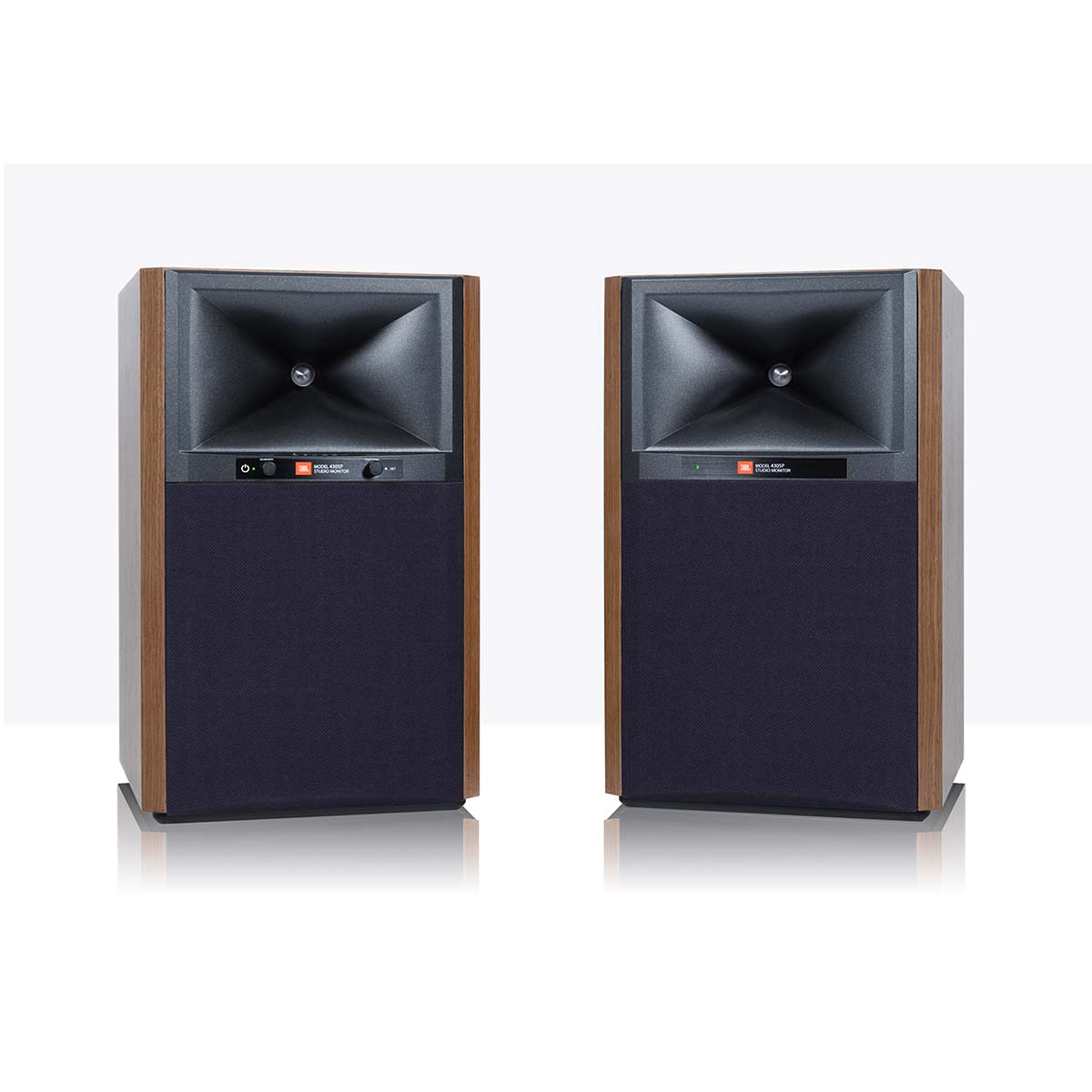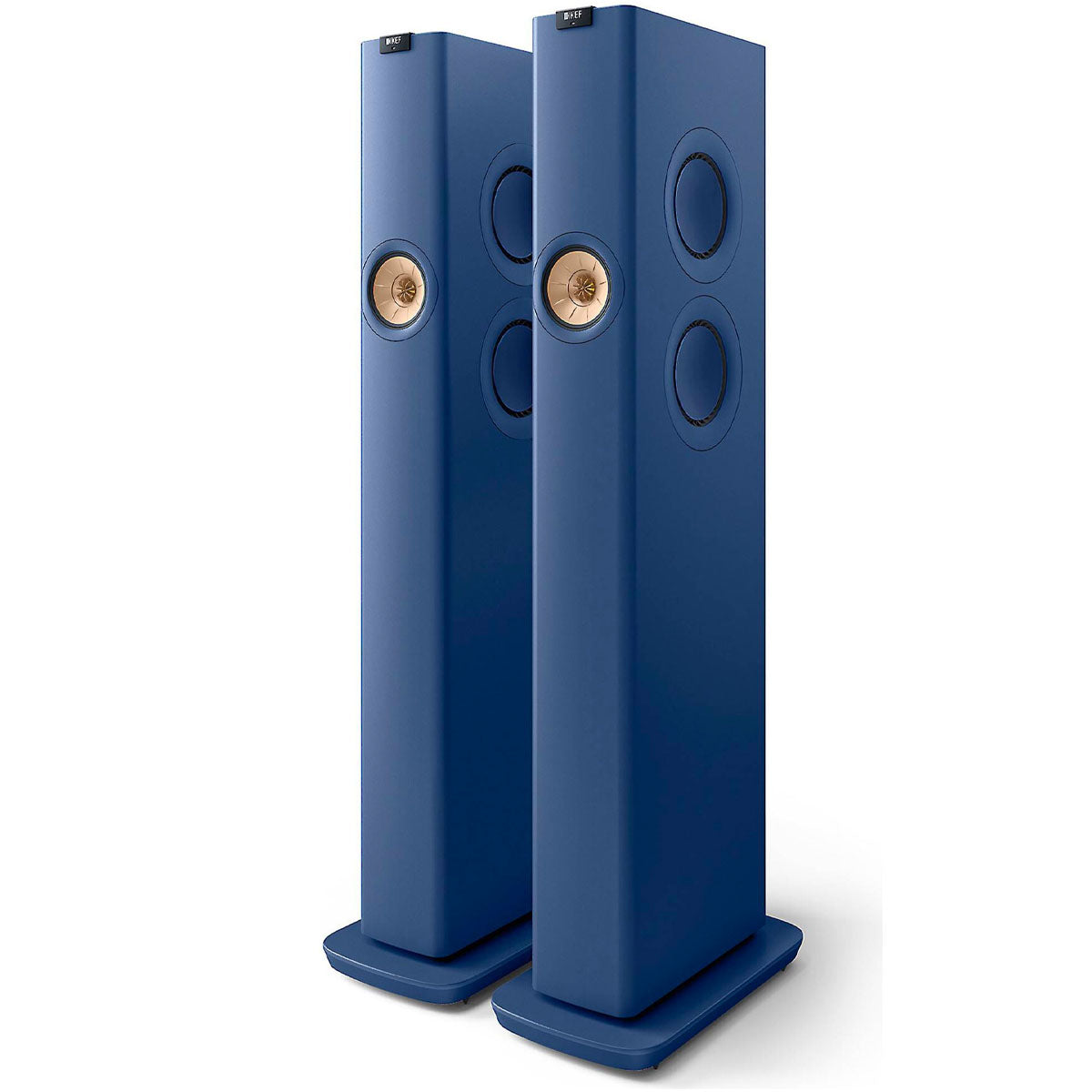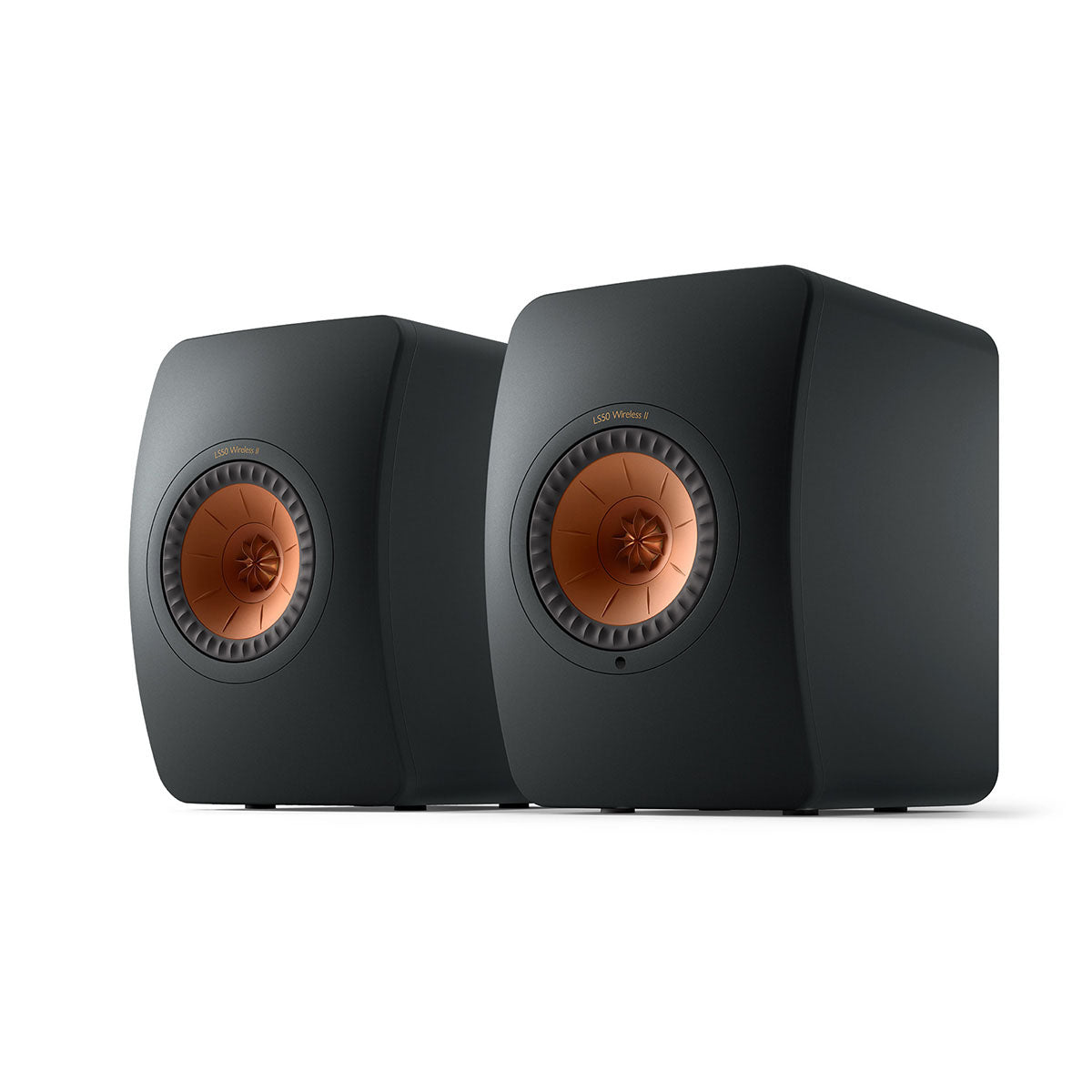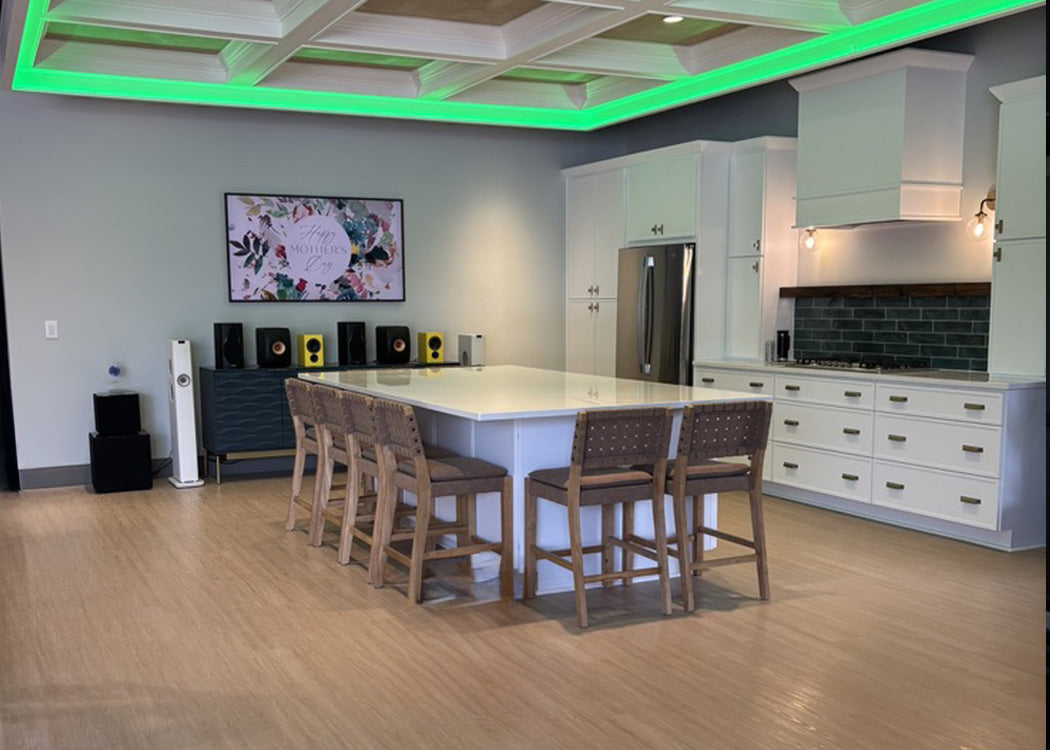Like the Klipsch Sevens and Nines, the 4305P and 4329P powered speaker systems use essentially the same inputs and electronics, other than the 4329P being larger with bigger amplifiers and drivers.
The 4305P uses the amazing 2410-H compression driver coupled with their High Definition Imaging horn and their 5.25” Pure-pulp Black Paper Cone Woofer with a Cast-frame. The 4329P steps up to the patented JBL 2409H, 1-inch compression driver and moves up to a larger 8” woofer. These drivers and associated amplifiers are derived from their extensive research at the famous Harman Northridge facility. Their studio monitors, which these speakers are based on, are used by audio engineers all around the world. Their compression drivers are world-class and every component is built to meet the specs of the best studios, as well as audiophiles.
These speakers use professional-grade DACs with 24bit/192khz resolution. Input-wise, they have a pair of pro-level balanced XLR inputs and 1/4 “ phono plugs. In addition, you get a 3.5mm analog input, a Toslink digital input, and an asynchronous USB input for use with computer audio. They have Bluetooth 5.1 ,which enables great resolution with lower latency and longer distances than prior versions. What sets these apart from many powered speakers is they can play lossless CD quality or higher resolution music over your network using AppleAirplay2 or Google Chromecast using your phone, iPad or computer.
This is simpler than you might think, allowing you to easily stream music to these speakers or to multiple sets of speakers around your house with just a couple of button clicks. These speakers also step up to Roon Ready for streaming.
As you step up to the more expensive JBL platform, you pick up a few key things. First, the speakers can be paired to each other wirelessly, allowing you to set them pretty much anywhere in a room without having to deal with a wire connecting them. Each speaker has its own electrical plug, so they each hold their own active crossover amplifiers without requiring a wire. However, you can connect them using an ethernet cable, which is included, to move the resolution from 24bit/96k to 24bit/192k. If you are an audiophile and are playing ultra hi-res music from Qobuz or somewhere else, use the ethernet cable to connect them. We also tested these in a room with the Peloton exercise bike. The 5.1 Bluetooth connection has very low latency so you can easily use these speakers to totally crank up the Peloton experience with your fave instructors (Robin Arzon, Jess King, or Christine D’Ercole are among staff favorites) as though you were in their New York studios, huffing and puffing next to fellow Peletophiles.
To that end, unlike the Klipsch Sevens and the Nines, you can control the entire volume range of these speakers using Bluetooth from your phone, Peloton or other device without touching the speakers. Both of the JBL powered monitors have subwoofer outs that engage an 80hz crossover when you plug in a powered subwoofer. Honestly, most people won’t need a sub on either one. But, if you step up to the JBL 4329 powered speakers with the 8” woofer and dual front ports, you will be shocked at how much bass and slam they have going all the way down to 28hz at 6db down. The speakers measure incredibly well with flat frequency response across the spectrum, producing sweet neutral sounds with massive power that is totally controlled. We have matching speaker stands for the JBL powered monitors in-house and online. The larger 4329P powered monitors use a special stand that is low to the floor, but angles perfectly for ear-level listening either in a chair or working out.
The downside of these speakers is the lack of an HDMI-Arc connection. So, you can’t control them using your TV remote. You can connect your television via optical to these, but it will require you to use the JBL remote control or speaker itself to change volume. These come in both black and walnut finishes.
















































